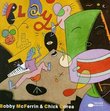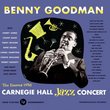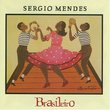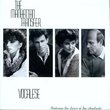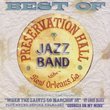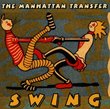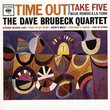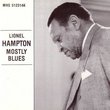| All Artists: Louis Armstrong, Duke Ellington Title: Great Summit: The Master Takes Members Wishing: 0 Total Copies: 1 Label: Blue Note Records Release Date: 1/9/2001 Album Type: Original recording remastered Genres: Jazz, Pop, Broadway & Vocalists Styles: Swing Jazz, Traditional Jazz & Ragtime, Vocal Jazz, Orchestral Jazz, Oldies, Vocal Pop, Traditional Vocal Pop Number of Discs: 1 SwapaCD Credits: 1 UPCs: 724352454723, 0724352454754 |
Search - Louis Armstrong, Duke Ellington :: Great Summit: The Master Takes
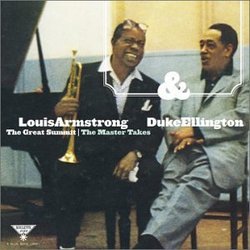 | Louis Armstrong, Duke Ellington Great Summit: The Master Takes Genres: Jazz, Pop, Broadway & Vocalists
Louis Armstrong and Duke Ellington the most important artists in the history of jazz and the two most influential American musicians of the 20th Century. Because of their centennials (1999 for Duke and 2000 for Louis), the... more » ![header=[] body=[This CD is available to be requested as disc only.]](/images/attributes/disc.png?v=430e6b0a) ![header=[] body=[This CD is unavailable to be requested with the disc and back insert at this time.]](/images/attributes/greyed_disc_back.png?v=430e6b0a) ![header=[] body=[This CD is available to be requested with the disc and front insert.]](/images/attributes/disc_front.png?v=430e6b0a) ![header=[] body=[This CD is unavailable to be requested with the disc, front and back inserts at this time.]](/images/attributes/greyed_disc_front_back.png?v=430e6b0a) |
Larger Image |
CD DetailsSynopsis
Album Description Louis Armstrong and Duke Ellington the most important artists in the history of jazz and the two most influential American musicians of the 20th Century. Because of their centennials (1999 for Duke and 2000 for Louis), their great legacy is celebrating a worldwide rennaissnce. And this month, they are the focus and the continum in Ken Burns' JAZZ, a 20-hour documentary to be broadcast on PBS. In April, 1961, these two giants got togethr in a New York studio for their only encounter. Louis brought his trumpet, voice and the all-stars with Trummy Young and Barney Bigard. Duke brought his pianistic talents and a considerable canon of great compositions. The magic that transpired over one night and the following afternoon was an historic simgularity. This disc contains all 17 master takes that made during those magical sessions, newly remixed from the original tapes with 24-bit/96kHz mastering for maximum fidelity, far superior to the previous mid-price CD issue. PERSONNEL: Louis Armstrong (trumpet,vocals), Trummy Young (trombone), Barney Bigard (clarinet), Duke Ellington (piano), Mort Herbert (bass), Danny Barcelona (drums). Similarly Requested CDs
|
Member CD ReviewsReviewed on 12/11/2015... Grand Masters of a style, albeit the defining style of Jazz. Unmistakable players inasmuch that NO ONE blows like Armstrong, a clear and honest horn that echoes through the ages. Mixed with the urbane Ellington riffs, a very pleasant way to invest you listening pleasure. Highly recommend for those seeking an honest late Armstrong beyond the Hello Dolly over produced greatest hits, and Ellington could not be anything but smoooooooth.
CD ReviewsWhy isn't this CD owned by everyone in all the world? William E. Adams | Midland, Texas USA | 04/09/2003 (5 out of 5 stars) "Oh, my gosh. Some dude nicknamed Duke plays piano on 17 of his own compositions. Featured is a trumpeter and singer nicknamed Satchmo, who brought along five of his band members. They recorded on two consecutive days in NYC in April, l961. They were geezers, and the record buyers were paying more attention to Miles and Coltrane and Brubeck at the time, although both old guys were still touring and pleasing audiences. Then Bob Thiele, a producer of all kinds of music, including Buddy Holly, but mainly a jazz expert, got Louis Armstrong and Mr. Ellington together at last. He couldn't get the whole Ellington Orchestra, so he compromised and got the Armstrong All-Stars as backup. The result is this total 67-minute masterpiece (and now a two-disc version as well, adding the rehearsal takes.) If you claim to love American music, buy one of these darn sets as quickly as you can. The sound is superb, the performances divine. If you don't love this, e-mail me and I'll buy your copy at a discount. But check for a heartbeat, because you may be dead and not realize it. This is the jazz pioneers' version of "Kind of Blue" in my opinion. The CD deserves much wider notice than it gets. Originally released on the small Roulette label, the album seems to have been overlooked even by Duke and Satchmo fans, which amazes me. If there are nearly 400 reviews of "Kind of Blue" posted on Amazon at this point, surely there should be 100 fans commenting on "The Great Summit."" As good as it gets Louis Gudema | Newton, MA USA | 04/28/2003 (5 out of 5 stars) "This is my favorite jazz CD, even better than Davis's "Kind of Blue," Armstrong's "Great Chicago Concert," Artie Shaw's "Highlights from Self Portrait," Sintra's "Songs for Swingin' Lovers," Ella (singing almost anything), and "The Complete Ella Fitzgerald & Louis Armstrong." Armstrong's All-Stars with Duke sitting in on piano, playing all Ellington. Great compositions with great improvisations.Just listen to the five samples Amazon.com provides. "Cottontail" opens with consecutive solos by Ellington, the great Barney Bigard, Armstrong, and trombonist Trummy Young, then later features a great scat "verse" by Armstrong. Almost every one of the cuts is as strong. This was the CD that brought clarinetist Barney Bigard to my attention. He played for years with Ellington's band, then with Armstrong's All-Stars, and I later read in Gary Giddins's "Satchmo" that Armstrong considered him the best jazz clarinetist he ever worked with. Listen to his solos on "Cottontail" (one is in the Amazon.com sample) and "Beautiful American", as well as his sparkling repartee with Armstrong on "In a Mellow Tone."Buy it and enjoy -- over and over."
|

 Track Listings (17) - Disc #1
Track Listings (17) - Disc #1